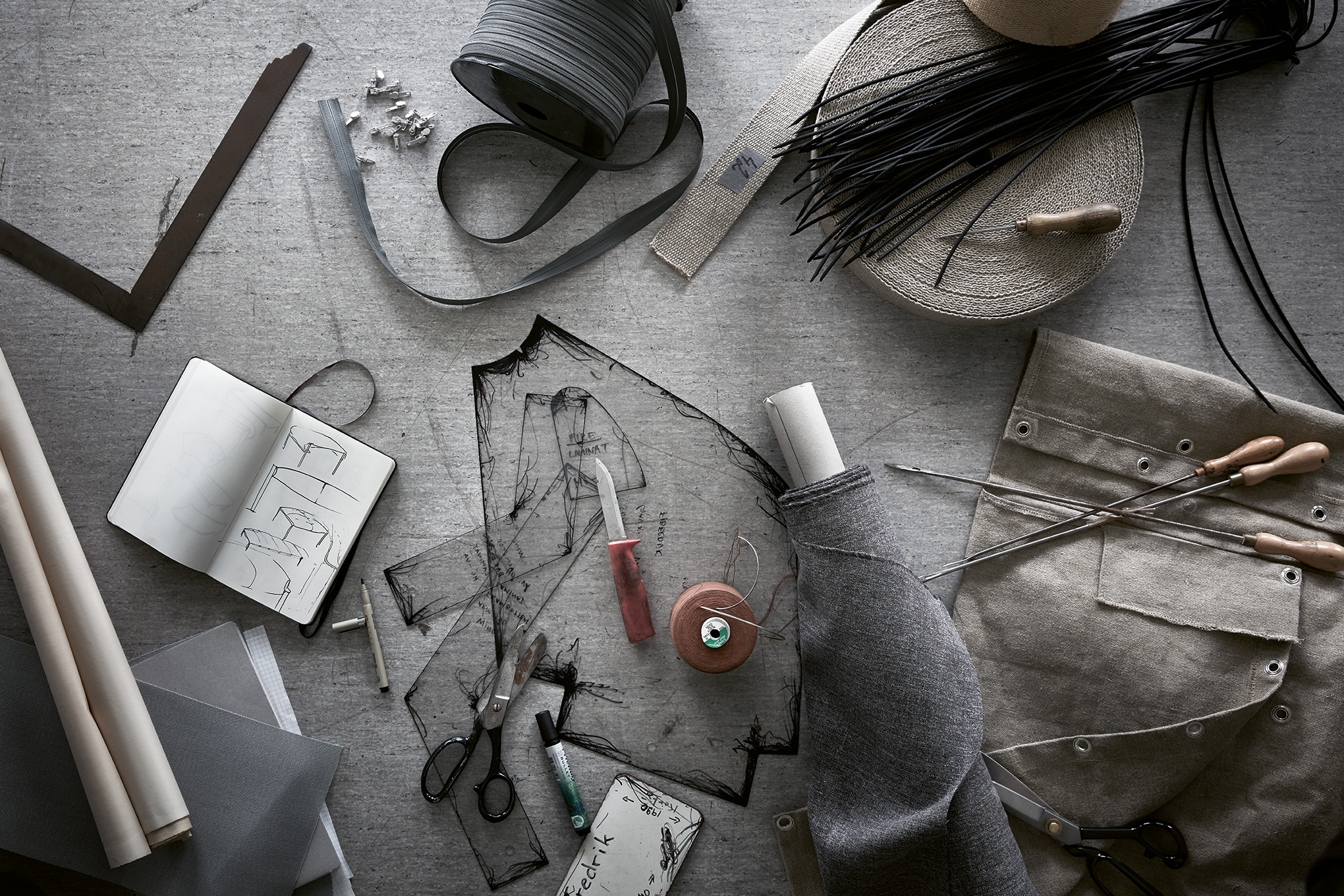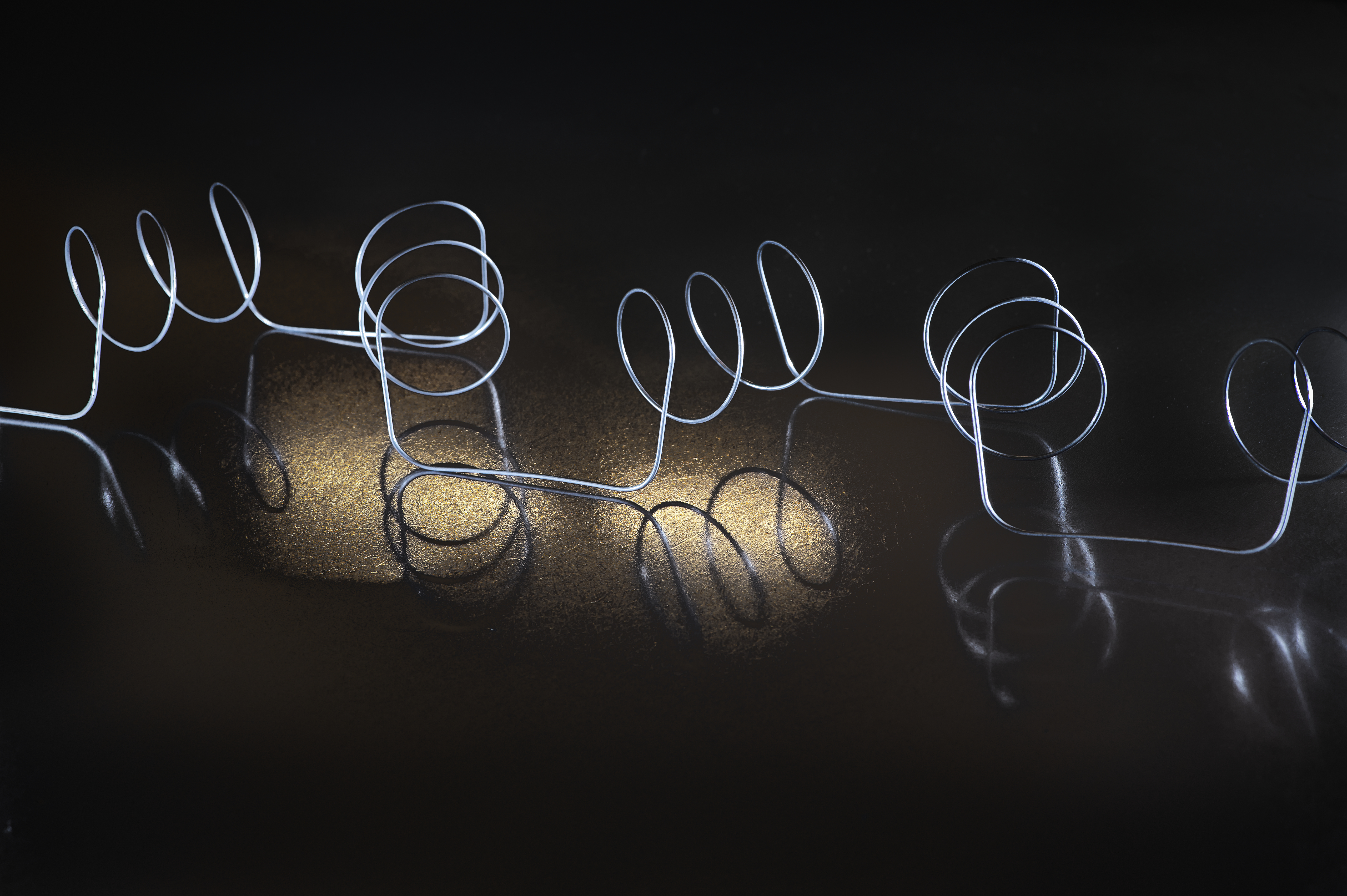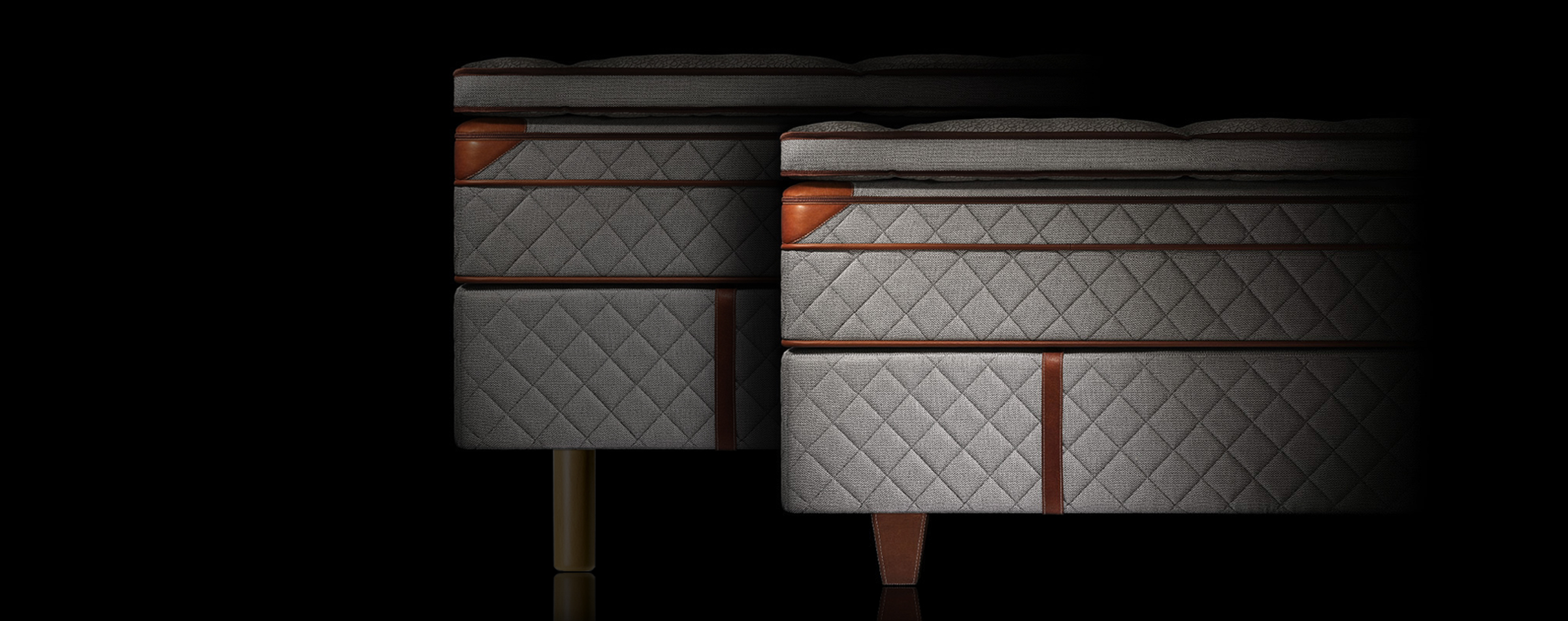DUX Innovative Design
Continuous development
We have dedicated the last 90 years to improving our beds, and we continue to do so. In-depth research lets us achieve the goal of constructing beds that allow deep sleep, giving you the comfort needed to regenerate your body while sleeping. For DUX, innovation does not mean a change in color. Before incorporating any improvement into our products, we conduct exhaustive research, allowing only measurable and verifiable upgrades.

DYNAMIC SUPPORT
You never stay perfectly still while sleeping. That is why you need a dynamic bed to contour all of your movements at night. The revolutionary DUX spring system adjusts itself to the weight and shape of your body. It moves as you move, providing continuous support and allowing your blood to circulate freely while your muscles relax.

Unique continuous coil spring design
The springs are flexible enough to let your shoulders and hips sink in, yet resilient enough to support your lower back. The spaces around the coils allow our beds to breathe, shuttling body heat out of the mattress. The airflow reduces odors and produces ventilation to combat bacteria or fungus. Thanks to the added resilience of our continuous coil design, you will never have to flip your DUX mattress. The springs do not lose their retention over time. That is why our beds are for life.

TIME-TESTED TECHNOLOGY
We are continuously refining, improving, and innovating our signature technology. Until now, the precise network of interlocking high-tensile steel springs has already stood the test of time. Our development works, and we have the history to prove it.
Keep your spine in line
The DUX Bed aligns your spine to help alleviate back pain and distributes your weight evenly. Our goal is to let you rest in the correct posture. It is only possible when your body is supported along its entire length.

Get quality sleep
A comfortable bed allows for quality sleep. A study conducted by the Karolinska Institute shows that people who use The DUX Bed fall asleep faster and get ten percent more deep sleep each night.

Put safety first
Our products meet strict human-ecological requirements, being completely free from any unhealthy or harmful substances. By choosing us, you can be sure you are sleeping on a toxin-free bed. To maintain a safe, mite, and allergen-free sleep environment, we offer various protective pillows and mattress covers.
Innovation
The DUX Bed With Interior Frame and Variable Leg Heights
Designed like a piece of furniture, The DUX Bed’s interior frame allows you to simply select the leg style, height, and color of your choice and fasten the leg to the frame by threading it into place.



